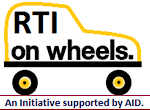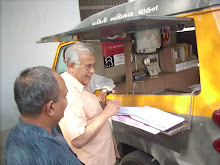Indian Express: New Delhi: Friday,
27 September 2024.
Of the 749 judges currently shown as posted in the 25 High Courts across the country, the assets of only 98 are available in the public domain through declarations posted on the official websites of these institutions just 13 per cent of the total number, according to official data reviewed by The Indian Express.
Of these, three High Courts constitute over 80 per cent of the asset declarations (see chart): the Kerala High Court tops with the details of 37 out of 39 judges available on its website; the Punjab and Haryana High Court has uploaded the information of 31 of 55 judges; and the Delhi High Court has posted details of 11 of 39 judges.
These declarations lists their movable and immovable assets, and those of their respective spouses and dependents, and includes details of property ownership and investment, such as in shares and mutual funds, fixed deposits, bonds and insurance policies and liabilities such as bank loans. Some of the declarations include ownership of jewellery as well.
Apart from the High Courts of Kerala, Punjab and Haryana, and Delhi, the judges whose asset declarations have been uploaded hail from the High Courts of Himachal Pradesh, Chhattisgarh, Karnataka and Madras. The websites of these seven High Courts do not name the judges who have not declared their assets although the Delhi High Court’s website says “File not uploaded” for this category.
On September 18, The Indian Express reported that the Supreme Court posted a list on its official website of 27 of its 33 judges who have declared their assets before the Chief Justice of India although only their names were provided and not their declarations. A Supreme Court official told this newspaper at the time that “public disclosure is purely on a voluntary basis”. On the same day, The Indian Express reviewed the assets data of High Court judges made available on the respective websites.
The overall numbers are significant, given that the Parliament’s Committee on Personnel, Public Grievances, and Law and Justice had recommended legislation for mandatory disclosure of assets and liabilities of judges of Supreme Court and High Courts on August 7, 2023.
Following this recommendation, The Indian Express sent queries on August 28, 2023, under the RTI Act, to eight of the 18 High Courts that have not made available any information on the assets of judges, covering all regions of the country. The RTI queries sought to know the reasons for not posting this information in the public domain so far; when it would be made available; details of objections, if any, by judges; copies of correspondence, if any, between Supreme Court and High Court on the issue; and a list of judges who have not declared their assets.
The responses, received between September and December 2023, ranged from the information being labelled as “personal” to stating that it was not covered under the RTI Act:
On August 28, 2009, a resolution passed by the full court of Delhi High Court stated: “All the judges are agreeable to make their assets public.”
And on September 8, 2009, the full bench of the Supreme Court resolved to declare the judges’ assets on its official website on or before October 31, 2009, adding that it was “purely on a voluntary basis”.
Following several RTI queries, the Supreme Court posted details of its judges’ assets and liabilities on its official website in November 2009. They were followed by the judges of a few High Courts on the respective official websites. The details made available on the Supreme Court website were not updated after March 31, 2018, and, till a couple of months ago, the declarations of only 55 former judges were available.
Of the 749 judges currently shown as posted in the 25 High Courts across the country, the assets of only 98 are available in the public domain through declarations posted on the official websites of these institutions just 13 per cent of the total number, according to official data reviewed by The Indian Express.
Of these, three High Courts constitute over 80 per cent of the asset declarations (see chart): the Kerala High Court tops with the details of 37 out of 39 judges available on its website; the Punjab and Haryana High Court has uploaded the information of 31 of 55 judges; and the Delhi High Court has posted details of 11 of 39 judges.
These declarations lists their movable and immovable assets, and those of their respective spouses and dependents, and includes details of property ownership and investment, such as in shares and mutual funds, fixed deposits, bonds and insurance policies and liabilities such as bank loans. Some of the declarations include ownership of jewellery as well.
Apart from the High Courts of Kerala, Punjab and Haryana, and Delhi, the judges whose asset declarations have been uploaded hail from the High Courts of Himachal Pradesh, Chhattisgarh, Karnataka and Madras. The websites of these seven High Courts do not name the judges who have not declared their assets although the Delhi High Court’s website says “File not uploaded” for this category.
On September 18, The Indian Express reported that the Supreme Court posted a list on its official website of 27 of its 33 judges who have declared their assets before the Chief Justice of India although only their names were provided and not their declarations. A Supreme Court official told this newspaper at the time that “public disclosure is purely on a voluntary basis”. On the same day, The Indian Express reviewed the assets data of High Court judges made available on the respective websites.
The overall numbers are significant, given that the Parliament’s Committee on Personnel, Public Grievances, and Law and Justice had recommended legislation for mandatory disclosure of assets and liabilities of judges of Supreme Court and High Courts on August 7, 2023.
Following this recommendation, The Indian Express sent queries on August 28, 2023, under the RTI Act, to eight of the 18 High Courts that have not made available any information on the assets of judges, covering all regions of the country. The RTI queries sought to know the reasons for not posting this information in the public domain so far; when it would be made available; details of objections, if any, by judges; copies of correspondence, if any, between Supreme Court and High Court on the issue; and a list of judges who have not declared their assets.
The responses, received between September and December 2023, ranged from the information being labelled as “personal” to stating that it was not covered under the RTI Act:
- Asked about making these declarations available in the public domain, the Allahabad High Court, which is the country’s largest currently with 84 judges, and the Bombay High Court said they were not covered under the definition of “information” under the RTI Act.
- The Uttarakhand High Court provided a copy of a resolution it passed on March 6, 2012, which stated that it “strongly objects to bring disclosure of assets by Judges under the purview of Right to Information Act… Court is not averse to disclosure of assets by judges in the Court website.”
- * The Rajasthan High Court in Jodhpur stated, “In absence of directions/provisions of posting the declaration on website, expectations of making available on website the declaration of assets and liabilities of all Hon’ble Judges of Rajasthan High Court cannot be made.”
- The Gujarat High Court stated that it “does not find any larger public interest for disclosure” of the “personal information”.
- The Andhra Pradesh High Court responded that “as the declaration of Assets is confidential, the said information cannot be furnished”.
- The Telangana High Court said the assets and liabilities of the Chief Justice and judges “will not be placed in the official website of the High Court as the same is treated as confidential as per the resolution of Supreme Court and so also the resolution of Full Court.”
- The Gauhati High Court stated, “As per the resolution of the Hon’ble Supreme Court it’s not mandatory to reflect the declaration of assets & liabilities of Hon’ble Judges in the official website of the High Court.”
- The Sikkim High Court responded: “Information sought by you is not available in the records of their Sections nor the same has been published in the website of this High Court.”
On August 28, 2009, a resolution passed by the full court of Delhi High Court stated: “All the judges are agreeable to make their assets public.”
And on September 8, 2009, the full bench of the Supreme Court resolved to declare the judges’ assets on its official website on or before October 31, 2009, adding that it was “purely on a voluntary basis”.
Following several RTI queries, the Supreme Court posted details of its judges’ assets and liabilities on its official website in November 2009. They were followed by the judges of a few High Courts on the respective official websites. The details made available on the Supreme Court website were not updated after March 31, 2018, and, till a couple of months ago, the declarations of only 55 former judges were available.
















































































